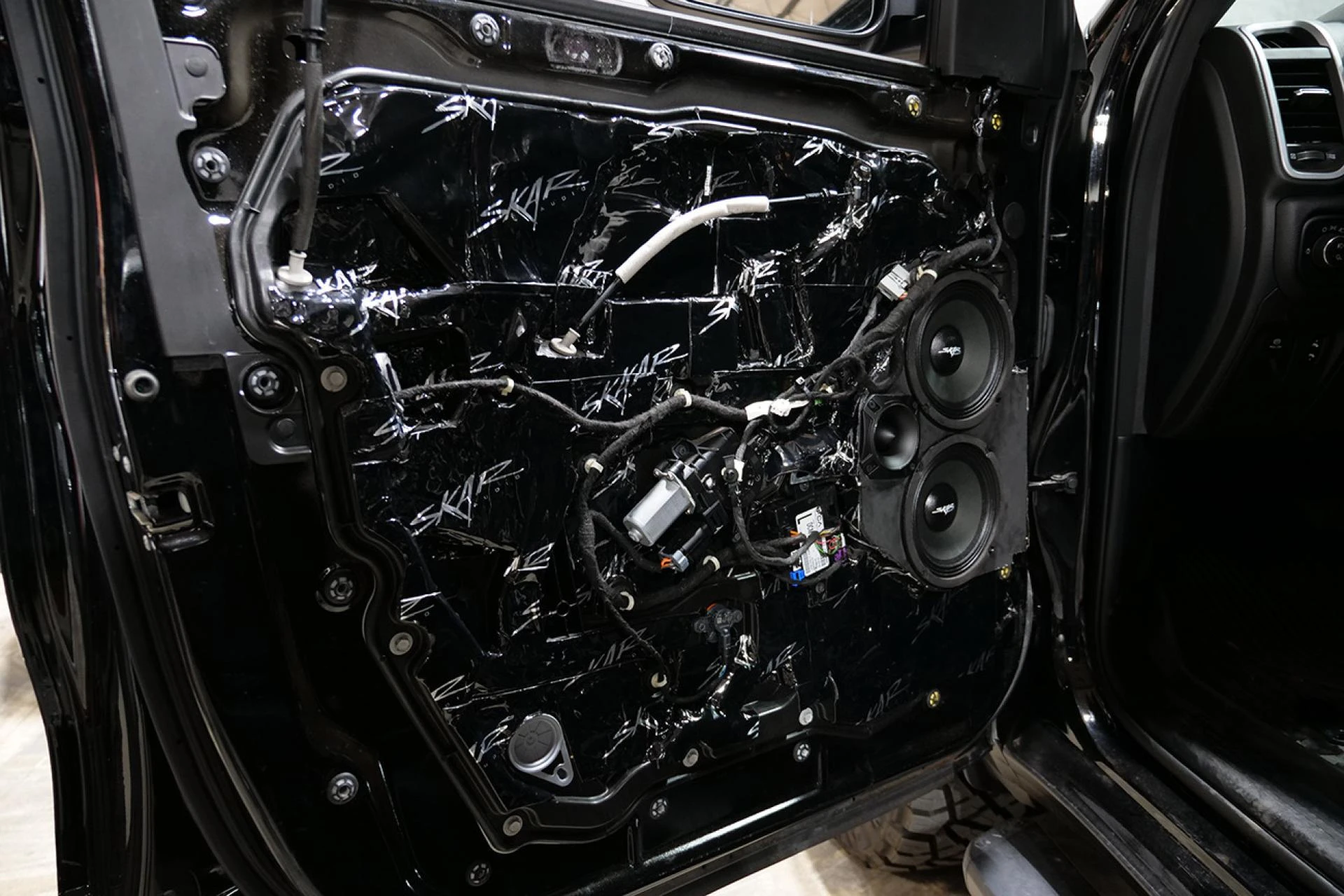In the quest for the ultimate driving experience, enthusiasts often prioritize powerful engines, cutting-edge tech, and luxury interiors. However, one often-overlooked aspect that can dramatically transform your time behind the wheel is sound control. This is where Sound Skin sound deadener steps in, offering an impressive solution to reduce noise, vibration, and enhance overall cabin comfort.

What Is Sound Skin Sound Deadener?
Sound Skin sound deadener is a specialized material engineered to reduce noise, vibrations, and resonance inside vehicles. It’s designed for easy installation across various parts of a car, such as doors, floors, roofs, and trunks. Unlike generic soundproofing products, Sound Skin combines advanced multi-layer technology for superior performance, blending butyl rubber layers with aluminum and foam barriers for comprehensive noise isolation.
How Does It Work?
Sound Skin works through a combination of mass damping and acoustic absorption. The dense butyl layer minimizes vibrational energy traveling through metal surfaces, while the foam layer absorbs airborne noise. Together, they create a significant reduction in road noise, engine hum, and rattling, resulting in a quieter, more enjoyable drive.
Key Benefits of Using Sound Skin Sound Deadener
- Superior Noise Reduction: Dramatically cuts down exterior noise, creating a serene cabin environment.
- Enhanced Audio Experience: With minimized background noise, music and conversations are crisper and clearer.
- Thermal Insulation: Besides sound, Sound Skin also offers thermal benefits, helping maintain a more consistent interior temperature.
- Increased Vehicle Longevity: By reducing vibrations, it helps protect delicate components and prevents premature wear.
- Boosted Resale Value: A quieter, well-maintained interior can positively impact your vehicle’s resale potential.
Common Applications for Sound Skin Sound Deadener
- Doors: Reduces wind and traffic noise, while improving speaker performance.
- Floor Panels: Minimizes tire and road noise, enhancing overall driving comfort.
- Roof: Diminishes rain noise and temperature extremes.
- Trunk and Wheel Wells: Critical areas for blocking exhaust and road vibrations, especially for vehicles with custom audio setups.
Installing Sound Skin: DIY or Professional?
Sound Skin sound deadener is designed for both DIY enthusiasts and professionals. DIY installation can be rewarding if you have patience and attention to detail. Basic tools like rollers, cutters, and heat guns (optional) are often needed. However, professional installation ensures comprehensive coverage and optimal results, especially for complex vehicle shapes or if you're short on time.
Step-by-Step DIY Installation Guide
- Preparation: Clean the surface thoroughly to remove dust, oil, and debris.
- Measure and Cut: Use templates to cut Sound Skin sheets to appropriate sizes for each area.
- Apply: Peel the backing and press the sheet firmly onto the metal surface, using a roller to eliminate air bubbles and ensure strong adhesion.
- Seal and Finish: Overlap seams slightly and double-layer critical areas for maximum effectiveness.
Comparing Sound Skin to Other Sound Deadening Products
Sound Skin is often compared to brands like Dynamat, Hushmat, and Noico. Here's how it stands out:
- Multi-Layer Design: Offers both sound damping and acoustic absorption in a single product.
- Ease of Installation: Lightweight and flexible, making it easier to work with compared to bulkier alternatives.
- Value for Money: Competitive pricing for premium performance.
Maintaining Your Sound Skin Installation
After installation, maintaining your Sound Skin-treated areas is straightforward. Avoid excessive moisture buildup, and check periodically for any signs of peeling or damage, especially in high-wear areas like floors. Properly installed Sound Skin can last the lifetime of your vehicle.
Is Sound Skin Only for Cars?
While it’s a popular choice for cars and trucks, Sound Skin sound deadener is also used in:
- RVs and campers for a quieter living space on the road.
- Boats to dampen engine and water noise.
- Home theaters and recording studios for improved acoustics.
Frequently Asked Questions (FAQs)
1. How much Sound Skin sound deadener do I need for my car? It depends on the vehicle size and the areas you plan to cover. For full coverage (doors, floors, roof, trunk), most sedans require around 50-60 square feet.
2. Can Sound Skin withstand high temperatures? Yes, Sound Skin is engineered to resist extreme temperatures, making it suitable for hot climates and areas near the engine bay.
3. Does adding sound deadener add a lot of weight? While Sound Skin adds some weight, it is minimal compared to the benefits. Most installations add between 20-40 pounds, depending on coverage.
4. Will Sound Skin affect my vehicle's performance? The slight weight increase is negligible and won't impact fuel efficiency or handling in any noticeable way.
5. How long does it take to install Sound Skin sound deadener? DIY installation time varies but typically ranges from 4-8 hours for a full car, depending on experience and vehicle complexity.
Final Thoughts
Sound Skin sound deadener is a game-changer for anyone seeking a quieter, more luxurious driving experience. By significantly reducing noise and vibrations, it not only enhances daily comfort but also improves audio performance and vehicle longevity. Whether you're planning a DIY upgrade or considering professional help, Sound Skin offers a reliable, high-performance solution that truly delivers results.



